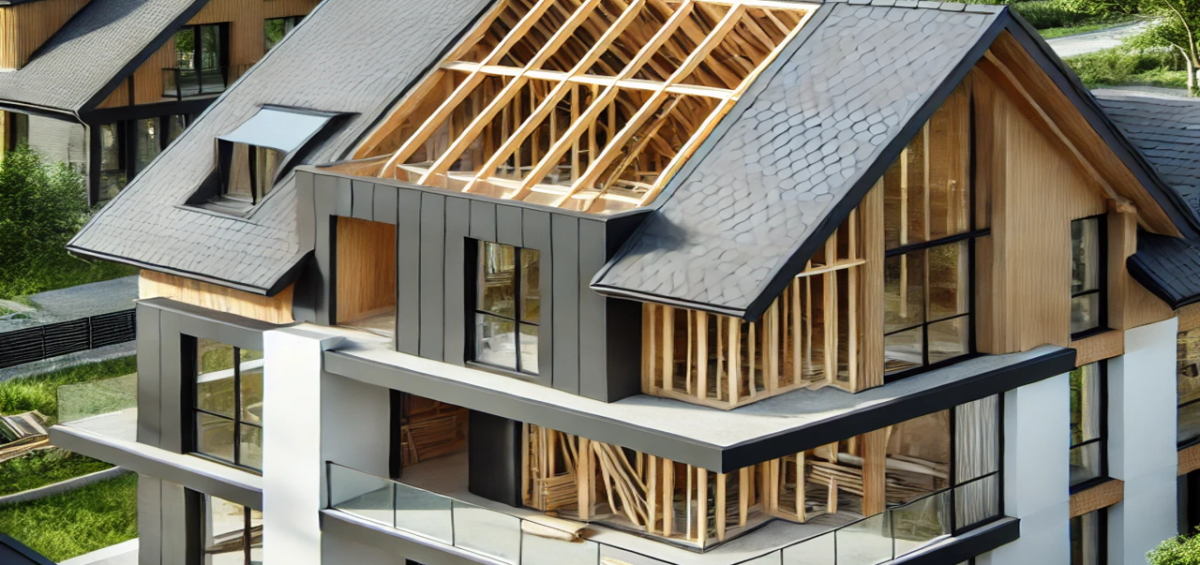The terms modern architecture and contemporary architecture are often used interchangeably, but they refer to distinct design philosophies. While both emphasize clean lines and innovative materials, they have different origins and principles. Modern architecture emerged in the early 20th century as a reaction to traditional, ornate styles, prioritizing functionality and simplicity. In contrast, contemporary architecture is fluid and constantly evolving, incorporating the latest trends, technologies, and sustainable practices. This article will explore the key differences between these two architecture styles and help you determine which best suits your preferences.
Defining Modern Architecture
Modern architecture originated in the early to mid-20th century, heavily influenced by the Bauhaus movement and the International Style. This design philosophy emphasizes minimalism, clean lines, and a strong connection between form and function. Key characteristics include:
- Open floor plans that create a seamless flow between living spaces
- A preference for industrial materials such as steel, glass, and concrete
- An emphasis on geometric forms and a lack of decorative embellishments
- Large windows to bring in natural light and create a connection with the outdoors
Unlike contemporary architecture, which evolves based on current trends, modern architecture follows a structured and timeless design approach. Famous architects like Ludwig Mies van der Rohe, Le Corbusier, and Frank Lloyd Wright played a significant role in shaping this style.
Defining Contemporary Architecture
Unlike modern architecture, which is rooted in a specific time period, contemporary architecture refers to the design styles of the present day. It is constantly changing to incorporate new materials, technologies, and environmental considerations.
Key characteristics of contemporary architecture include:
- A focus on sustainability, including energy-efficient features and eco-friendly materials
- The use of mixed materials such as wood, metal, glass, and concrete
- Asymmetrical designs and organic, flowing shapes
- The integration of smart home technology and adaptable living spaces
Contemporary architecture house designs often emphasize innovation and adaptability, with architects like Zaha Hadid and Frank Gehry leading the movement. These homes push boundaries, embracing experimental forms and advanced construction methods.
Key Differences Between Modern and Contemporary Architecture
While modern architecture and contemporary architecture share some similarities, they have several key distinctions:
- Time Period: Modern architecture refers to a specific movement from the early 20th century, whereas contemporary architecture represents ever-evolving design trends.
- Design Approach: Modern architecture follows a structured, minimalist approach, while contemporary style architecture is more flexible and innovative.
- Materials: Modern architecture relies on industrial materials like concrete, steel, and glass, while contemporary residential architecture embraces eco-friendly and unconventional materials.
- Technology & Sustainability: Contemporary architecture prioritizes smart home integration and sustainable solutions, whereas modern architecture focuses more on simplicity and efficiency.
- Visual Comparison: A well-known example of modern architecture is the Farnsworth House by Ludwig Mies van der Rohe, while the Guggenheim Museum Bilbao by Frank Gehry exemplifies contemporary architecture style.
Which Style Is Right for You?
Choosing between modern architecture and contemporary architecture depends on personal preference and lifestyle needs.
- If you appreciate timeless, structured designs with a minimalist approach, modern architecture may be the best fit. A contemporary house that incorporates modernist principles can create a sleek, organized aesthetic.
- If you prefer cutting-edge, dynamic designs that adapt to modern living, contemporary architecture house designs offer more flexibility. Features like sustainable materials, smart technology, and innovative layouts make contemporary residential architecture a great choice for forward-thinking homeowners.
In many cases, elements of both styles can be blended to create a unique and functional living space.
Conclusion
While modern architecture and contemporary architecture are often confused, they are distinct styles with unique characteristics. Modern architecture is rooted in a historical movement emphasizing simplicity and function, while contemporary architecture reflects current trends and innovations. Whether you prefer the timeless elegance of modern architecture or the adaptability of contemporary style architecture, understanding these differences can help you make informed design choices for your home.

